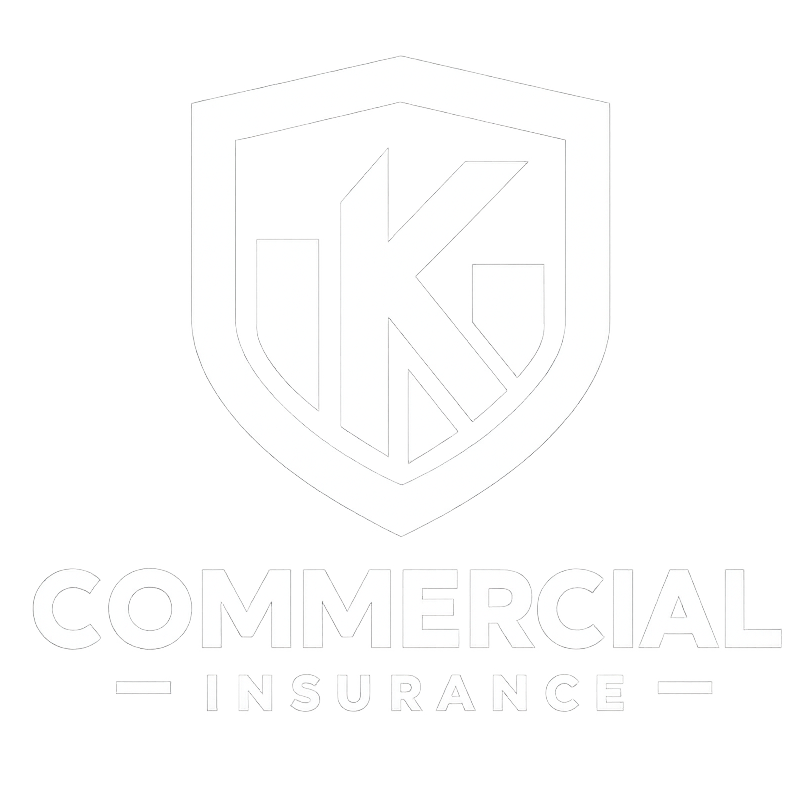Top 3 Recommended Policies

In the world of transportation and logistics, hot shot trucking has emerged as a vital service, catering to urgent freight needs. However, with the rapid growth of this industry, the importance of having the right insurance coverage cannot be overstated. This article delves into the intricacies of hot shot trucking insurance, providing essential insights for truck owners and operators.
Understanding Hot Shot Trucking
Hot shot trucking refers to the expedited transportation of smaller loads, often utilizing medium-duty trucks and trailers. This service is particularly beneficial for businesses that require immediate delivery, such as construction companies needing equipment or parts. The flexibility and speed of hot shot trucking make it a popular choice in various sectors. In addition to construction, industries such as oil and gas, agriculture, and manufacturing also leverage hot shot services to meet their urgent shipping needs, ensuring that they can maintain productivity and meet tight deadlines.
Key Characteristics of Hot Shot Trucking
Hot shot trucking is characterized by several unique features. First, it typically involves shorter distances compared to traditional freight hauling. Second, the loads are often time-sensitive, requiring quick turnaround times. Lastly, hot shot trucking often operates on a less-than-truckload (LTL) basis, meaning that multiple shipments can be combined into one trip, maximizing efficiency. Furthermore, hot shot trucking services are generally more flexible in terms of scheduling and routing, allowing drivers to adapt to changing demands and pick up loads on short notice. This adaptability is a significant advantage for businesses that face unpredictable logistics challenges.
The Role of Hot Shot Trucking in the Supply Chain
Hot shot trucking plays a crucial role in the supply chain by providing rapid delivery options that larger freight carriers may not offer. This service is particularly advantageous for industries that rely on just-in-time inventory practices, where delays can lead to significant operational disruptions. By bridging the gap between suppliers and customers, hot shot trucking enhances overall supply chain efficiency. Additionally, the rise of e-commerce has further amplified the need for hot shot services, as businesses strive to meet consumer expectations for fast delivery. The ability to quickly transport goods directly to job sites or retail locations not only helps companies maintain their competitive edge but also fosters stronger relationships with clients who depend on timely service.

The Importance of Insurance in Hot Shot Trucking
Insurance is a critical component of any trucking operation, and hot shot trucking is no exception. The nature of this business, which often involves high-value cargo and tight delivery schedules, necessitates comprehensive coverage to protect against various risks. Without adequate insurance, operators may find themselves financially vulnerable, facing significant losses that could jeopardize their business operations.
Moreover, the fast-paced environment of hot shot trucking means that operators must be prepared for unexpected challenges at a moment's notice. This unpredictability underscores the importance of having not only the right insurance policies in place but also a solid understanding of how those policies work. For instance, knowing the nuances of coverage limits and deductibles can make a substantial difference in how effectively a trucking company can respond to incidents when they arise.
Common Risks Faced by Hot Shot Trucking Operators
Hot shot trucking operators face several risks, including accidents, cargo damage, theft, and liability claims. Accidents can occur due to various factors, such as adverse weather conditions or driver error, leading to costly repairs and potential legal issues. Additionally, the cargo being transported may be susceptible to damage during transit, further emphasizing the need for adequate insurance coverage. For example, fragile items like electronics or machinery can be particularly vulnerable, making it essential for operators to ensure they have the right type of cargo insurance that covers specific risks associated with their load.
Furthermore, theft is another significant concern in the hot shot trucking industry. With valuable cargo often left unattended during loading or unloading, operators must be vigilant. Insurance policies that include theft protection can provide peace of mind, allowing drivers to focus on timely deliveries without the constant worry of losing their cargo. In a market where every minute counts, having the right coverage can be the difference between a successful delivery and a devastating loss.
Legal Requirements for Hot Shot Trucking Insurance
In many regions, hot shot trucking operators are legally required to carry specific types of insurance. This typically includes liability insurance, which covers damages to third parties in the event of an accident. Additionally, cargo insurance is often mandated to protect the goods being transported. Understanding these legal requirements is essential for compliance and to avoid penalties. Operators must also stay informed about any changes in regulations, as the trucking industry is subject to evolving laws that can impact insurance needs.
Moreover, beyond the basic legal requirements, operators may also consider additional coverage options such as physical damage insurance, which protects their vehicles against damage from accidents or natural disasters. This can be particularly important for hot shot trucking operators who invest heavily in their equipment. By having a comprehensive insurance strategy that goes beyond the minimum legal requirements, operators can safeguard their investments and ensure their business remains resilient in the face of unforeseen challenges.
Types of Insurance Coverage for Hot Shot Trucking
When it comes to insuring a hot shot trucking business, several types of coverage are available. Each type serves a different purpose and addresses specific risks associated with the industry.
Liability Insurance
Liability insurance is perhaps the most critical type of coverage for hot shot trucking operators. It provides financial protection in the event of accidents that result in injury or property damage to third parties. This coverage is not only a legal requirement in many areas but also essential for safeguarding the operator's financial stability. Without adequate liability insurance, a single accident could lead to devastating financial consequences, potentially jeopardizing the entire business. Furthermore, liability insurance can also cover legal fees associated with lawsuits, which can be a significant burden for operators who may not have the resources to handle such expenses.
Cargo Insurance
Cargo insurance is designed to protect the goods being transported. This coverage is vital for hot shot trucking operators, as they often transport high-value items. In the event of damage or loss during transit, cargo insurance can help recover the financial losses incurred, ensuring that the operator remains solvent. Additionally, many clients require proof of cargo insurance before entrusting their goods to a trucking company, making it a key factor in securing contracts. Operators should also be aware that different types of cargo may require specialized coverage, as certain items may be more susceptible to damage or theft, necessitating tailored policies to adequately protect those specific goods.
Physical Damage Insurance
Physical damage insurance covers the truck and trailer against damages caused by accidents, theft, or vandalism. This type of coverage is crucial for maintaining the operator's equipment, as repairs can be costly and time-consuming. By having physical damage insurance, operators can ensure their vehicles are protected, allowing them to continue their business operations smoothly. Moreover, this insurance can also cover losses due to natural disasters, such as floods or storms, which can be particularly relevant for operators who travel through varied climates. Investing in comprehensive physical damage insurance not only safeguards the operator's assets but can also enhance their credibility in the eyes of clients, who often prefer to work with companies that demonstrate a commitment to maintaining their equipment and ensuring reliable service delivery.
Factors Influencing Insurance Costs
The cost of hot shot trucking insurance can vary significantly based on several factors. Understanding these elements can help operators make informed decisions when selecting coverage.
Driving History
An operator's driving history plays a significant role in determining insurance premiums. A clean driving record with no accidents or violations can lead to lower rates, while a history of accidents or claims can result in higher costs. Insurance providers often assess the risk associated with a driver based on their past behavior on the road. Additionally, factors such as the number of years a driver has been on the road and the types of vehicles they have operated can also influence their insurance profile. For instance, a seasoned driver with extensive experience in handling various truck models may be viewed as less of a risk compared to a newer driver, potentially leading to more favorable insurance rates.
Type of Cargo
The nature of the cargo being transported can also influence insurance costs. High-value or hazardous materials may require additional coverage or higher premiums due to the increased risk involved. Operators should be transparent about the types of cargo they transport to ensure they have adequate protection in place. Furthermore, certain cargo types, like perishable goods or fragile items, may necessitate specialized insurance policies that account for the unique risks associated with their transport. This can include coverage for spoilage or damage during transit, which can further affect the overall cost of insurance.
Geographic Location
The location in which the hot shot trucking business operates can impact insurance rates. Areas with higher accident rates or theft incidents may lead to increased premiums. Conversely, operating in regions with lower risk factors can result in more favorable rates. Understanding the local landscape is essential for budgeting insurance costs. Additionally, urban areas may present different challenges compared to rural settings, such as increased traffic congestion and more stringent regulations, which can also influence insurance pricing. Operators should consider not only their immediate surroundings but also the routes they frequently travel, as certain highways or regions may have a reputation for higher accident rates, further affecting their insurance premiums.

Choosing the Right Insurance Provider
Selecting the right insurance provider is a crucial step for hot shot trucking operators. The right partnership can make a significant difference in terms of coverage, support, and overall satisfaction.
Researching Insurance Options
Before making a decision, it's essential to research various insurance providers. Look for companies that specialize in trucking insurance and have a solid reputation in the industry. Reading reviews and seeking recommendations from fellow operators can provide valuable insights into the reliability and service quality of different providers.
Understanding Policy Terms
When evaluating insurance options, it's vital to thoroughly understand the terms and conditions of each policy. Pay attention to coverage limits, deductibles, and any exclusions that may apply. A policy that seems affordable upfront may not provide adequate protection in the event of a claim, leading to unexpected financial burdens.
Seeking Professional Advice
Consider consulting with an insurance broker who specializes in trucking insurance. These professionals can offer personalized guidance, helping operators navigate the complexities of insurance options and find coverage that aligns with their specific needs. Their expertise can be invaluable in ensuring that operators make informed decisions.
Tips for Reducing Insurance Costs
While insurance is a necessary expense for hot shot trucking operators, there are strategies to help reduce costs without sacrificing coverage quality.
Maintaining a Clean Driving Record
One of the most effective ways to lower insurance premiums is to maintain a clean driving record. Safe driving practices not only reduce the risk of accidents but also demonstrate to insurers that the operator is a low-risk client. This can lead to discounts and more favorable rates over time.
Implementing Safety Measures
Investing in safety measures, such as driver training programs and vehicle maintenance, can also help reduce insurance costs. Insurers often reward operators who take proactive steps to minimize risks. Demonstrating a commitment to safety can lead to lower premiums and a more favorable relationship with insurance providers.
Bundling Insurance Policies
Many insurance providers offer discounts for bundling multiple policies. For instance, operators can often save money by combining their truck insurance with other types of coverage, such as general liability or property insurance. This approach not only simplifies the insurance process but can also lead to significant cost savings.
The Claims Process in Hot Shot Trucking Insurance
Understanding the claims process is essential for hot shot trucking operators. Knowing how to navigate this process can make a significant difference in the event of an accident or loss.
Reporting an Incident
In the event of an accident or damage to cargo, the first step is to report the incident to the insurance provider as soon as possible. Most insurers have specific guidelines for reporting claims, and timely notification is crucial for ensuring a smooth claims process. Operators should document the incident thoroughly, including photographs and witness statements, to support their claim.
Working with Adjusters
After a claim is reported, an insurance adjuster will typically be assigned to investigate the incident. This professional will assess the damages and determine the validity of the claim. Operators should be prepared to provide any necessary documentation and cooperate fully with the adjuster's inquiries to facilitate a timely resolution.
Understanding Claim Outcomes
Once the investigation is complete, the insurance provider will communicate the outcome of the claim. If the claim is approved, the operator will receive compensation based on the terms of their policy. However, if the claim is denied, the operator has the right to appeal the decision. Understanding the claims process and being proactive can help operators navigate potential challenges effectively.
Final Thoughts on Hot Shot Trucking Insurance
Hot shot trucking is a dynamic and evolving industry that requires careful consideration of insurance needs. With the right coverage in place, operators can protect their business against various risks and ensure smooth operations. By understanding the types of insurance available, the factors influencing costs, and the claims process, hot shot trucking operators can make informed decisions that safeguard their livelihood.
Investing time in researching and selecting the right insurance provider, along with implementing safety measures, can lead to significant long-term benefits. Ultimately, the goal is to create a resilient business model that can withstand the challenges of the industry while providing reliable service to clients.
In conclusion, hot shot trucking insurance is not just a regulatory requirement; it is a vital component of a successful trucking operation. By prioritizing insurance needs and staying informed about industry trends, operators can navigate the complexities of hot shot trucking with confidence.
Contact Us

